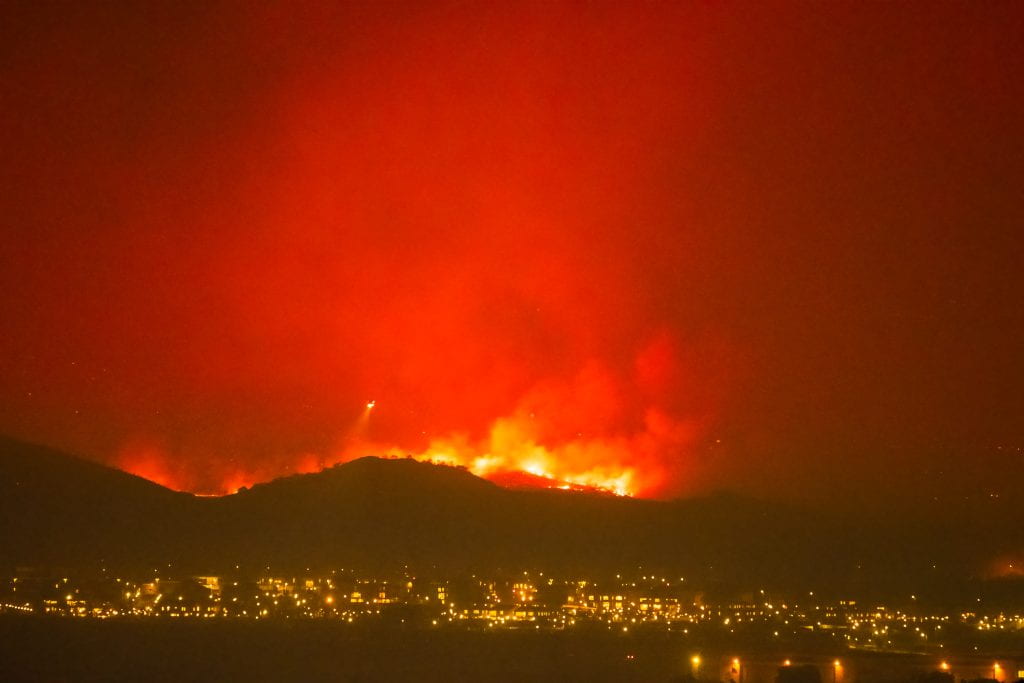
University Of California Irvine Study Finds Human-Caused Climate Change To Blame For Increase In California’s Wildfires

In the quarter century between 1996 and 2020, wildfires in California consumed five times more area than they did from 1971 to 1995. Researchers at the University of California and other international institutions have concluded that nearly all of these wildfires were caused by human-induced climate change. This study highlights the urgent need to address climate change and its impact on the environment.
Sustainable Development Goals (SDGs)
The findings of this study align with several Sustainable Development Goals (SDGs) set by the United Nations. These goals include:
- Goal 13: Climate Action – Taking urgent action to combat climate change and its impacts.
- Goal 15: Life on Land – Protecting, restoring, and promoting sustainable use of terrestrial ecosystems, sustainably managing forests, combating desertification, and halting biodiversity loss.
- Goal 17: Partnerships for the Goals – Strengthening the means of implementation and revitalizing the global partnership for sustainable development.
By addressing climate change and working towards these SDGs, we can mitigate the risk of wildfires and protect the environment for future generations.
SDGs, Targets and Indicators
| SDGs | Targets | Indicators |
|---|---|---|
| SDG 13: Climate Action | Target 13.1: Strengthen resilience and adaptive capacity to climate-related hazards and natural disasters | Indicator not mentioned in the article |
| SDG 15: Life on Land | Target 15.3: Combat desertification, restore degraded land and soil, including land affected by wildfires | Indicator not mentioned in the article |
| SDG 15: Life on Land | Target 15.4: Ensure the conservation of mountain ecosystems, including their biodiversity, to enhance their capacity to provide benefits that are essential for sustainable development | Indicator not mentioned in the article |
| SDG 15: Life on Land | Target 15.5: Take urgent and significant action to reduce the degradation of natural habitats, halt the loss of biodiversity, and protect and prevent the extinction of threatened species | Indicator not mentioned in the article |
1. Which SDGs are addressed or connected to the issues highlighted in the article?
SDG 13: Climate Action
The issue of human-caused climate change and its impact on the increase in California’s wildfires is directly connected to SDG 13, which focuses on taking urgent action to combat climate change and its impacts.
SDG 15: Life on Land
The article mentions the increase in wildfires in California, which can lead to the degradation of land and ecosystems. This is connected to SDG 15, which aims to protect, restore, and promote sustainable use of terrestrial ecosystems, sustainably manage forests, combat desertification, and halt and reverse land degradation and biodiversity loss.
2. What specific targets under those SDGs can be identified based on the article’s content?
Target 13.1: Strengthen resilience and adaptive capacity to climate-related hazards and natural disasters
The increase in wildfires in California due to human-caused climate change highlights the need to strengthen resilience and adaptive capacity to climate-related hazards and natural disasters.
Target 15.3: Combat desertification, restore degraded land and soil, including land affected by wildfires
The wildfires in California can lead to land degradation and soil erosion. Therefore, it is important to combat desertification, restore degraded land and soil, including land affected by wildfires.
Target 15.4: Ensure the conservation of mountain ecosystems, including their biodiversity, to enhance their capacity to provide benefits that are essential for sustainable development
The article does not specifically mention mountain ecosystems, so this target may not be directly applicable based on the information provided.
Target 15.5: Take urgent and significant action to reduce the degradation of natural habitats, halt the loss of biodiversity, and protect and prevent the extinction of threatened species
The increase in wildfires can lead to the degradation of natural habitats and loss of biodiversity. Therefore, it is important to take urgent and significant action to reduce habitat degradation, halt biodiversity loss, and protect threatened species.
3. Are there any indicators mentioned or implied in the article that can be used to measure progress towards the identified targets?
The article does not mention any specific indicators that can be used to measure progress towards the identified targets. However, potential indicators could include the number of wildfires in California, the area of land affected by wildfires, the rate of land degradation and soil erosion, and the status of biodiversity in affected areas.
Behold! This splendid article springs forth from the wellspring of knowledge, shaped by a wondrous proprietary AI technology that delved into a vast ocean of data, illuminating the path towards the Sustainable Development Goals. Remember that all rights are reserved by SDG Investors LLC, empowering us to champion progress together.
Source: indiaeducationdiary.in

Join us, as fellow seekers of change, on a transformative journey at https://sdgtalks.ai/welcome, where you can become a member and actively contribute to shaping a brighter future.






